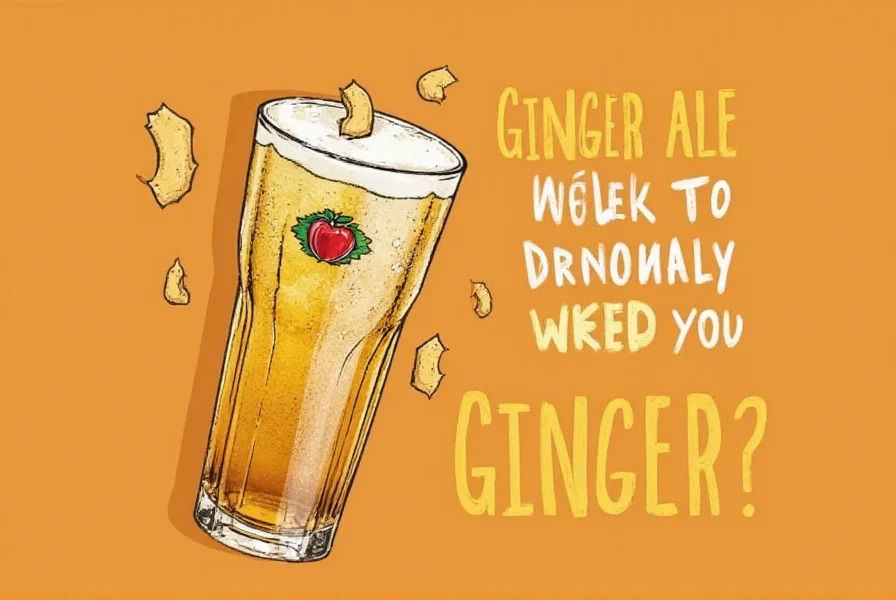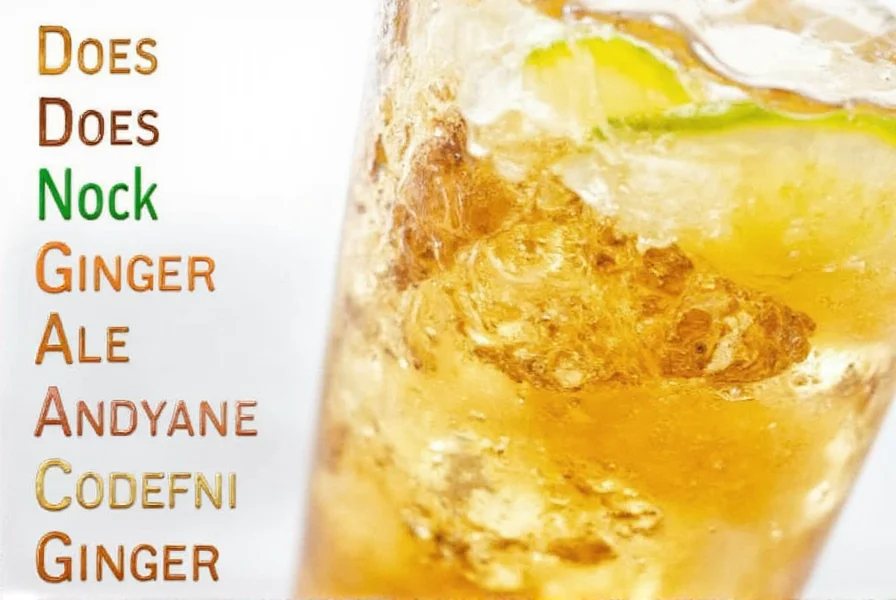When you reach for a bottle of ginger ale, you might reasonably assume it's packed with ginger flavor. The name certainly suggests it. However, the reality of what's inside most commercial ginger ales might surprise you. While ginger is technically present in most formulations, the amount varies significantly between brands and types.
The Evolution of Ginger Ale Ingredients
Ginger ale has an interesting history that explains why modern versions differ from their origins. Originally developed in Ireland during the 1800s, traditional ginger ale was a fermented beverage made with substantial amounts of fresh ginger root, sugar, water, and a fermentation agent. This "hard" ginger ale contained alcohol and had a pronounced spicy ginger flavor.
When non-alcoholic versions emerged in the United States, manufacturers began creating what's known as "golden" or "dry" ginger ale. Canada Dry, which popularized the golden style in the early 20th century, used actual ginger but in much smaller quantities than traditional recipes. Today's mass-produced ginger ales often rely primarily on artificial flavorings to achieve the characteristic taste while minimizing production costs.
What's Actually in Your Ginger Ale?
To understand whether your ginger ale contains real ginger, you need to examine the ingredients list. Most commercial ginger ales contain:
- Carbonated water
- High fructose corn syrup or sugar
- Citric acid
- Natural and/or artificial flavors
- Caramel color (in golden varieties)
- Ginger extract or ginger root extract (in varying amounts)
The key phrase to look for is "ginger extract" or "ginger root extract." Some premium brands list this higher in the ingredients, indicating a greater concentration, while budget brands might list it near the end, suggesting minimal content.
| Brand Type | Ginger Content | Primary Flavor Source | Notable Ingredients |
|---|---|---|---|
| Traditional craft ginger ale | High (2-5%) | Real ginger root | Fresh ginger, cane sugar, natural fermentation |
| Mainstream commercial (e.g., Canada Dry) | Low (0.1-0.5%) | Artificial flavoring with some ginger extract | Ginger extract, artificial flavors, high fructose corn syrup |
| Premium craft sodas | Moderate to high (1-3%) | Real ginger with natural flavorings | Fresh ginger juice, organic cane sugar, natural flavors |
How to Identify Ginger Ale with Real Ginger
If you're specifically seeking ginger ale with substantial ginger content, here's what to look for:

Check the ingredients list for terms like "ginger root extract," "fresh ginger juice," or "real ginger" appearing in the first few ingredients. Brands that emphasize their ginger content often highlight this on the front label with phrases like "made with real ginger" or "crafted with ginger root."
Artisanal and craft soda makers are more likely to use significant amounts of real ginger. These products typically cost more but deliver a more authentic ginger experience with the potential digestive benefits associated with ginger. Some health food stores carry "strong" or "traditional" ginger ale that contains higher ginger concentrations.
Ginger Content and Health Considerations
Many people reach for ginger ale when experiencing digestive discomfort, assuming it contains enough ginger to provide relief. However, most commercial varieties contain insufficient ginger to deliver therapeutic benefits. For genuine digestive support, you'd need a product with at least 1-2% ginger content, which is rare in mainstream ginger ales.
If you're seeking ginger for health reasons, consider these alternatives:
- Homemade ginger tea made with fresh ginger root
- Ginger supplements with standardized gingerol content
- Craft ginger beers with higher ginger concentrations
- Fermented ginger beverages like kefir with ginger

Reading Labels for Ginger Content
When evaluating whether ginger ale contains real ginger, pay attention to:
- Ingredient order: Ingredients are listed by quantity, so ginger appearing near the beginning indicates higher content
- Specific terminology: "Ginger root extract" suggests real ginger, while "natural flavors" could include artificial components
- Marketing claims: "Made with real ginger" is more reliable than vague terms like "ginger flavor"
- Nutrition facts: Some premium brands disclose ginger content percentage
Be aware that "natural flavors" can include ginger-derived compounds, but this doesn't guarantee significant ginger content. The FDA allows manufacturers to use this term without specifying exact ingredients.
Conclusion: Ginger Presence Varies Widely
So, does ginger ale have ginger? Technically yes, but the amount varies dramatically. Mainstream commercial brands like Canada Dry and Schweppes contain minimal ginger extract primarily for flavor consistency, while craft producers often use substantial amounts of real ginger root. If you're seeking the distinctive spicy kick and potential health benefits of ginger, you'll need to seek out specialty products specifically formulated with higher ginger concentrations.
Does Canada Dry ginger ale contain real ginger?
Yes, Canada Dry contains ginger root extract, but in very small amounts. Their formulation primarily relies on artificial flavorings to achieve the characteristic ginger taste while using minimal actual ginger for cost efficiency. The ginger content is typically less than 0.5% of the total ingredients.
How can I find ginger ale with real ginger?
Look for craft or artisanal brands that specifically state they use fresh ginger root or ginger juice as a primary ingredient. Check that ginger appears in the first three ingredients on the label. Brands like Reed's, Bruce's Ginger Ale, and homemade varieties typically contain significantly more real ginger than mainstream commercial options.
Can ginger ale help with nausea if it contains little ginger?
Most commercial ginger ales contain insufficient ginger to provide therapeutic benefits for nausea. The carbonation and sugar content might offer some soothing effect, but the minimal ginger content (typically less than 0.5%) is unlikely to deliver the 1-1.5 grams of ginger needed for anti-nausea effects. For genuine relief, consider ginger tea, supplements, or craft ginger beers with higher ginger concentrations.
What's the difference between ginger ale and ginger beer?
Traditional ginger beer contains more ginger and is often fermented, resulting in a stronger, spicier flavor and sometimes a small alcohol content. Most commercial ginger ales use minimal ginger with artificial flavorings for a milder taste. Craft ginger beers typically contain 2-5 times more ginger than standard ginger ales, making them more suitable for those seeking genuine ginger flavor and potential health benefits.










 浙公网安备
33010002000092号
浙公网安备
33010002000092号 浙B2-20120091-4
浙B2-20120091-4